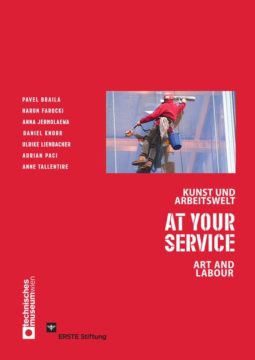Arbeit betrifft alle, die Meinungen dazu sind vielfältig. Kunst in einem Technikmuseum eröffnet dabei ungewöhnliche Perspektiven: Technik wird zum Dialogpartner von Kunst. In die Präsentationen zu technischen Entwicklungen der Stahlerzeugung, der Energiegewinnung, des Eisenbahnwesens und des Alltags intervenieren KünstlerInnen: Pavel Braila, Anna Jermolaewa, Daniel Knorr und Ulrike Lienbacher haben neue Kunstwerke zum Thema Arbeit geschaffen. Videos von Harun Farocki, Adrian Paci undAnne Tallentire ergänzen das Spektrum. Die KünstlerInnen werfen pointiert Fragen zur Arbeitsgesellschaft auf: Wie verändert der Einsatz neuer Technologien Arbeit? Was charakterisiert Tätigkeiten, die nicht automatisiert werden können und arbeitskraftintensiv bleiben? Verschwindet der von Schwerarbeit gezeichnete Körper aus unserem Blickfeld? Welche Art Beachtung erhalten Arbeitende und Arbeitslose? Sind Flexibilität, Mobilität und Arbeitsmigration unsere Arbeitszukunft?
Work concerns us all, and opinions about it are as varied as they are numerous. Showcasing art in a Technical Museum opens up unusual prospects, engaging technology and art in dialogue. A number of artists have been asked to intervene in the presentations on technological developments in steel production, energy extraction, the railways and everyday life: Pavel Braila, Anna Jermolaewa, Daniel Knorr and Ulrike Lienbacher have all created new art works on the theme of work. Videos by Harun Farocki, Adrian Paci and Anne Tallentire complement the spectrum.The artists pointedly address issues relating to our work-oriented society: How does the use of new technologies affect work itself? What characterises activities that cannot be automated and remain labour-intensive? Is the toil of hard labour that once plagued the human body now a thing of the past? What sort of attention does an unemployed person receive compared with someone in employment? Are flexibility, mobility and migratory labour the future of our working lives?
- Veröffentlicht am Freitag 30. November 2012 von Fotohofedition
- ISBN: 9783902675798
- 176 Seiten
- Genre: Hardcover, Kunst, Softcover
